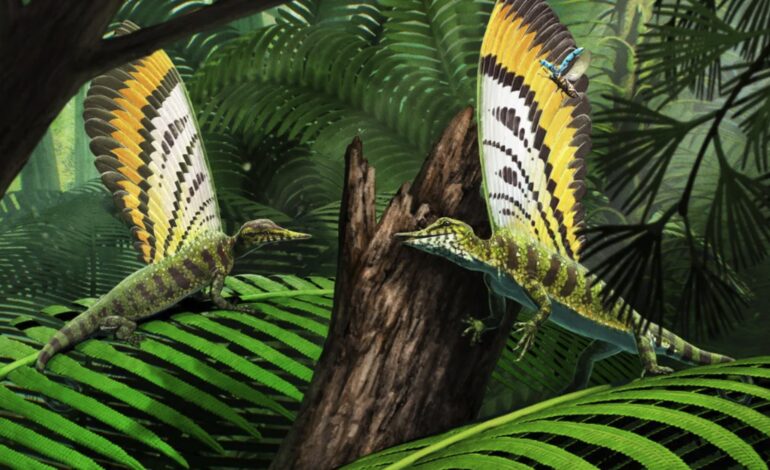New Study Reveals Communication Role of Ancient Reptile’s Back Fin

A recent study has uncovered fascinating insights about the **Mirasaura grauvogeli**, a **247-million-year-old** reptile known for its distinctive back fin. Researchers at the **State Museum of Natural History in Stuttgart**, Germany, have re-analyzed a fossil of this ancient creature, which was originally discovered in **1939** and acquired by the museum in **2019**. Their findings suggest that the fin served a crucial role in communication, challenging previous assumptions that it was covered in feathers.
The study, published in the journal **Nature**, posits that the back structure of **Mirasaura** was composed of a unique type of skin that extended outwards like a fan. This conclusion marks a significant departure from the long-held belief that these appendages were feather-like. According to the research team, the structures were “distinctly corrugated,” resembling cardboard, and likely had a degree of flexibility.
In analyzing the fossil, the researchers discovered preserved pigment-carrying particles known as **melanosomes**, which are more characteristic of birds than reptiles. This finding indicates that the evolutionary adaptations of reptiles may be more complex than previously understood. **Richard Prum**, an evolutionary biologist at **Yale University**, commented on the study, stating, “This evidence reveals that vertebrate skin has evolutionary possibilities that are weirder than might be easily imagined.”
Revisiting Fossils for New Insights
The research team, which identified **Mirasaura** for the first time, also focused on its close relative, **Longisquama insignis**, which exhibits similar long, feather-like structures. Previous studies struggled to fully interpret the **Longisquama** fossil due to its poor preservation. However, the new analysis of both species suggests that they belong to the **drepanosaur** family, a group of reptiles from the **Triassic era**, often referred to as “monkey lizards.”
The **drepanosaurs** are characterized by their long, bird-like skulls and bodies that resemble chameleons, indicating they likely inhabited trees. Should this new insight be corroborated by further research, it implies that these reptiles may have displayed intricate structures extending from their backs, much like those of **Mirasaura** and **Longisquama**.
Paleontologists often rely on empirical evidence to infer the physical traits of ancient animals. This study exemplifies how revisiting older fossils can provide astonishing revelations, reshaping our understanding of reptilian evolution.
The implications of this research extend beyond mere curiosity. As scientists continue to explore the evolutionary history of vertebrates, the findings encourage a reevaluation of the features that ancient creatures developed. Such insights not only enhance our knowledge of the past but also highlight the rich diversity of life that once thrived on Earth. As discoveries like these emerge, the scientific community eagerly anticipates further revelations that could reshape our comprehension of evolutionary biology.





